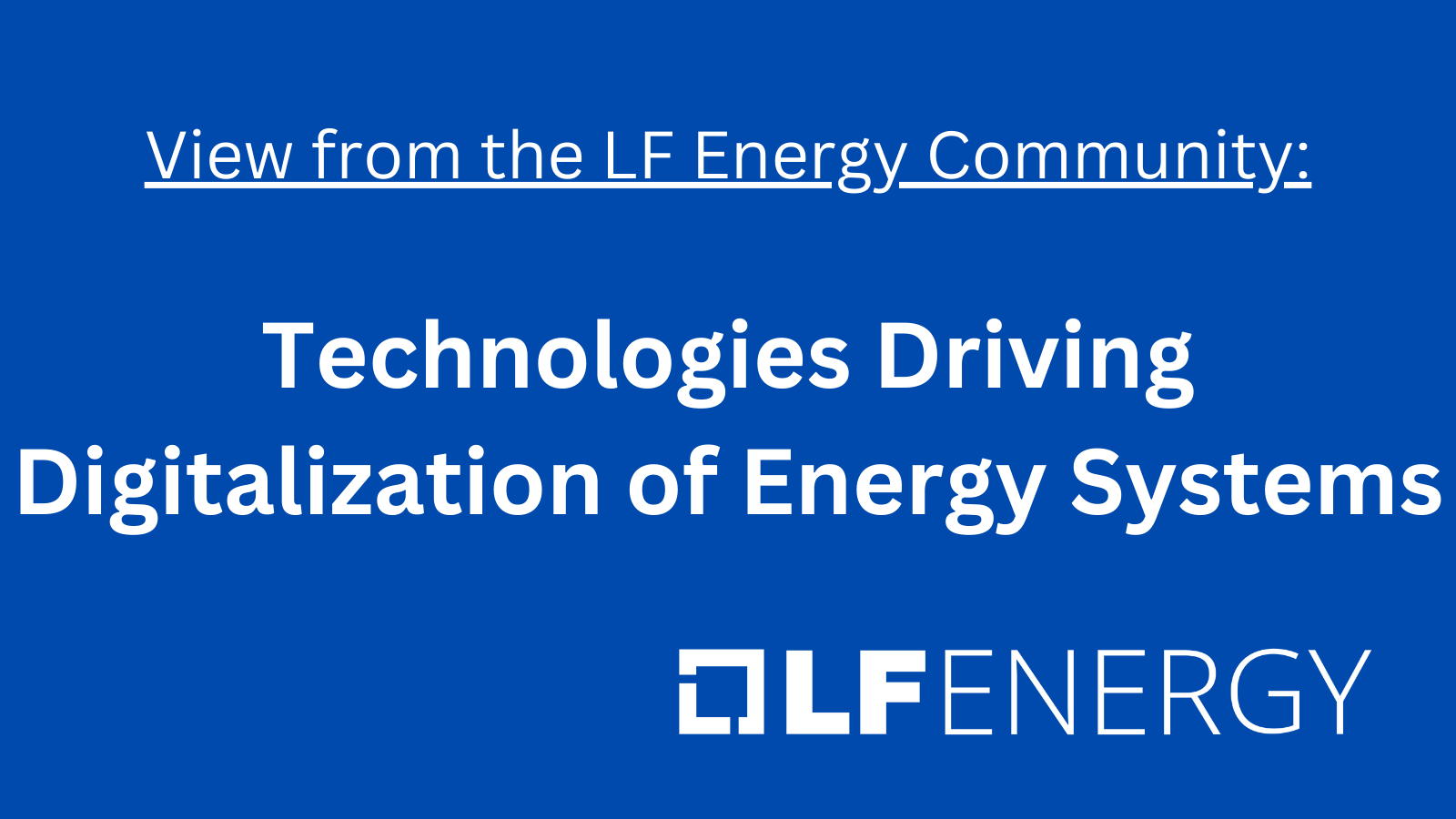View from the Community: Technologies Driving Digitalization of Energy Systems
This is the third in a series of articles exploring the technological challenges and solutions to achieving the goals of the energy transition. Drawing on the knowledge of experts from utilities, vendors, technology companies, and researchers in the Linux Foundation Energy community, this series explores the current state of technological evolution supporting the energy transition, as well as the most important trends, biggest challenges, and how to address them. If you have not already, you should review the previous articles in the series:
This article assesses the technologies currently driving digitalization of energy systems, as well as predictions for technology trends in this area over the next several years. The recent Energy Transition Readiness Study from LF Energy and LF Research found that more than half of utilities see information technology (IT) and operational technology (OT) being on the way to convergence. This represents a massive shift for an industry with huge amounts of sunk costs into OT.
The LF Energy community was asked about technology trends in the short term, particularly in the coming year. Responses covered both high level trends, as well as more specific technologies these experts see as having rapid impact.

Alliander’s Jonas van den Bogaard
Jonas van den Bogaard of Alliander set the stage at a high level, identifying “cloud technology, artificial intelligence, machine learning, and edge computing” as key areas expected to have an impact in 2024. Dr. Antonello Monti of RWTH Aachen also highlighted “growing interest in AI solutions,” which Seita Energy Flexibility’s Nicolas Höning also mentioned cloud adoption increasing through “more late majority growth”. And Alliander’s Maarten Mulder contributed “more standardization in terms of hardware to be more flexible with new applications.”
Other high level trends identified include “distributed energy” (Chris Xie of Futurewei), “data infrastructure” (Dr. McGee Young of WattCarbon), and “electrification along with the need for investment in transmission and generation infrastructure” (Dr. Audrey Lee, Microsoft). These high level trends reflect the challenge of digitalizing an industry as complex and safety critical as energy. Doing so essentially requires an entire tech stack, taking advantage of technology trends more broadly happening beyond energy specifically.

Futurewei’s Chris Xie
Numerous community members also weighed in with more specific technologies they see making an impact this coming year, with Höning pointing out several: “IoT and gateway devices as well as automated energy and CO2 savings computing are experiencing big early adoption growth, and dynamic prices as control signals are seeing the first projects progress past pilots.” Tamás Russ of SprintEins sees “browsers developing themselves further, making more and more possible in web-based applications.” And PIONIX’s Robert de Leeuw hopes to “finally see the first EVs and chargers with Vehicle-to-Grid capabilities in the field, not only in controlled tests, but real production equipment.”
While these trends are encouraging in the short term, more needs to be done to truly achieve the objectives of the energy transition and decarbonization. The community was asked about trends beyond next year, into the next five years. Xie pointed out that this will require “new business models for energy”. Tied to that, some high level trends remained consistent, such as Lee again mentioning “electrification”, which will be a long process to complete.

PIONIX’s Robert de Leeuw
The experts interviewed did identify some additional specific technologies that they anticipate having a big impact over this longer period:
- “Thanks to PLCs, I believe that electrical infrastructure as a code will become the norm.” -Boris Dolley, RTE
- “Demand response systems will slowly but surely start using more and more EVs to stabilize the grid. Starting with fleet depots. In 5 years a lot of private drivers will use their EV as a battery on wheels for V2G to get cheaper energy prices and help stabilize the grid.” -de Leeuw
- “Leveraging extended reality, robotics, and Internet of Things.” -van den Bogaard
- “Need for new network operation paradigms when the percentage of renewables is higher.” -Monti
- “Sector coupling, more assets and processes linked into markets closer to real-time by moving towards day-ahead from fixed contracts and towards imbalance from day-ahead.” -Höning
- “More tools will use WebAssembly to have almost native-like performance without the hassle of installing them, making tools more accessible.” -Russ
- “There will be new market technologies that can trade energy at a lower level, and enable more flexibility. Also new applications in the network such as energy storage, hydrogen, and heat. And solutions will be needed for new risks that come with these new applications.” -Mulder
It’s clear that a huge number of new technologies need to be developed as well as deployed in the coming years to digitalize energy systems. Experts in the LF Energy community have identified technology trends happening in the wider world that will have an impact such as cloud, IoT, edge, AI, infrastructure-as-code, and standardization. These will need to work together with energy-specific technologies around distributed energy resources, electrification, demand response, forecasting, flexibility, and storage. No one organization can build all of these alone, and in light of the scale of the challenges faced, it is not realistic for proprietary vendors to build these in a timely and interoperable manner. The next, and final, article in this series will discuss how open source communities can help meet these challenges.
